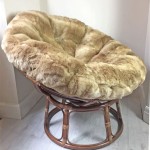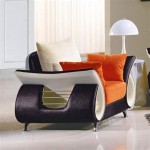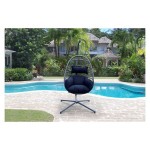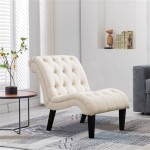Best 500 Lb Capacity Office Chairs: A Comprehensive Guide
The modern office environment demands ergonomic solutions catering to a diverse range of body types. For individuals requiring robust support and enhanced durability, a 500 lb capacity office chair represents a crucial investment. These chairs are engineered to accommodate larger individuals, offering superior comfort and promoting proper posture throughout extended work periods. This article delves into the key considerations and specific features to evaluate when selecting the ideal 500 lb capacity office chair.
The importance of selecting a suitable office chair cannot be overstated. Poor posture, inadequate support, and uncomfortable seating can contribute to a multitude of health issues, including back pain, neck strain, and carpal tunnel syndrome. A 500 lb capacity office chair, specifically designed for heavier users, addresses these concerns by providing the necessary structural integrity and ergonomic adjustability to ensure optimal well-being and productivity.
Key Consideration 1: Structural Integrity and Materials
The defining characteristic of a 500 lb capacity office chair is its robust construction. The frame is typically manufactured from heavy-duty steel, reinforced to withstand significant weight and pressure. The chair's base, often a five-star design, provides stability and prevents tipping. The casters are generally oversized and constructed from durable materials such as polyurethane, ensuring smooth movement across various floor surfaces while supporting the chair's maximum weight capacity.
The materials used in the chair's construction directly impact its longevity and performance. Look for chairs that incorporate high-quality components such as commercial-grade gas cylinders, which control the chair's height adjustment. The seat and backrest are typically padded with high-density foam, offering superior cushioning and resistance to compression over time. The upholstery material should be breathable and durable, capable of withstanding daily wear and tear. Common upholstery options include leather, faux leather, and mesh, each offering distinct advantages in terms of comfort and aesthetics.
Consider the welding quality of the chair's frame. Strong, consistent welds are essential for ensuring the chair's structural integrity and preventing premature failure. Similarly, inspect the hardware used to assemble the chair, ensuring that all bolts and screws are appropriately sized and securely fastened. A well-constructed chair will exhibit minimal wobble or play in its components, indicating a high level of craftsmanship and attention to detail.
The chair's weight capacity is not merely a number; it reflects the chair's ability to withstand rigorous use and maintain its structural integrity over an extended period. Exceeding the chair's weight capacity can compromise its stability and potentially lead to component failure, posing a safety risk to the user. Selecting a chair with an appropriate weight capacity is therefore paramount to ensuring both safety and longevity.
Key Consideration 2: Ergonomic Adjustability
A 500 lb capacity office chair should offer a comprehensive range of ergonomic adjustments to accommodate individual preferences and promote proper posture. These adjustments typically include seat height, backrest angle, lumbar support, armrest height and position, and tilt tension. The ability to customize these settings allows users to fine-tune the chair to their specific needs, minimizing strain and discomfort.
Seat height adjustment is crucial for ensuring that the user's feet are flat on the floor and knees are bent at a 90-degree angle. This position promotes proper circulation and reduces pressure on the lower back. A gas cylinder mechanism allows for smooth and precise height adjustments, enabling users to find the optimal seating position.
Backrest angle adjustment allows users to recline the chair and reduce pressure on the spine. A reclining backrest can also promote movement and prevent stiffness during extended work periods. Some chairs offer a synchro-tilt mechanism, which allows the backrest and seat to recline in a coordinated manner, providing a more natural and comfortable sitting experience. A tilt tension adjustment allows users to control the resistance of the reclining mechanism, ensuring that the chair provides adequate support throughout the range of motion.
Lumbar support is essential for maintaining proper spinal alignment and reducing lower back pain. An adjustable lumbar support mechanism allows users to customize the amount of support provided to the lumbar region. Some chairs offer inflatable lumbar support, which can be adjusted to conform to the user's specific contours.
Adjustable armrests are important for supporting the arms and shoulders, reducing strain on the neck and upper back. Armrests should be adjustable in height, width, and depth to accommodate a variety of body types and work styles. Some chairs offer armrests that can pivot inward or outward, providing additional support and comfort.
The ease of use of the adjustment mechanisms is also an important consideration. Levers and knobs should be easily accessible and intuitive to operate. A well-designed chair will allow users to quickly and easily adjust the settings to their preferences without having to strain or contort their bodies.
Key Consideration 3: Comfort and Breathability
While structural integrity and ergonomic adjustability are paramount, the comfort and breathability of a 500 lb capacity office chair are also critical factors to consider. A comfortable chair will encourage users to maintain proper posture and reduce the likelihood of experiencing discomfort or fatigue during extended work periods. Breathable materials will help to regulate body temperature and prevent sweating, further enhancing comfort.
The seat cushion should be adequately padded and contoured to provide optimal support and pressure distribution. High-density foam is a popular choice for seat cushions due to its durability and resistance to compression. Some chairs feature memory foam, which conforms to the user's body shape and provides customized support. The shape of the seat cushion can also impact comfort. A waterfall edge, which slopes downward towards the front of the seat, can help to reduce pressure on the thighs and improve circulation.
The backrest should provide adequate support for the entire back, from the lumbar region to the upper shoulders. The shape of the backrest can also impact comfort. A curved backrest can help to promote proper spinal alignment, while a taller backrest can provide additional support for the neck and head. Some chairs feature a mesh backrest, which allows for enhanced airflow and helps to regulate body temperature.
The upholstery material plays a significant role in both comfort and breathability. Leather is a luxurious and durable option, but it can be less breathable than other materials. Faux leather is a more affordable alternative that offers a similar aesthetic, but it may also be less breathable. Mesh is a highly breathable option that allows for excellent airflow, but it may not provide as much cushioning as other materials. Fabric upholstery offers a balance between comfort and breathability.
The overall design of the chair should also contribute to its comfort. A well-designed chair will be aesthetically pleasing and will blend seamlessly into the office environment. The chair should also be easy to clean and maintain, ensuring that it remains comfortable and presentable for years to come.
Beyond the core considerations of structural integrity, ergonomic adjustability, and comfort, several other factors may influence the selection of a 500 lb capacity office chair. These include the chair's aesthetics, warranty, and price. The chair's aesthetics should complement the existing office decor, while the warranty should provide adequate protection against defects and premature failure. The price of the chair should be commensurate with its features, quality, and durability.
Regular maintenance is essential for prolonging the life of a 500 lb capacity office chair. This includes cleaning the upholstery, lubricating the moving parts, and tightening any loose screws or bolts. Proper maintenance will ensure that the chair continues to provide optimal support and comfort for years to come.
Selecting the right 500 lb capacity office chair is a significant investment in both comfort and productivity. By carefully considering the key features and factors discussed in this article, individuals can make an informed decision and choose a chair that meets their specific needs and preferences. With the right chair, users can experience a more comfortable, ergonomic, and productive work environment.
Investing in a high-quality, 500 lb capacity office chair should be viewed as a preventative measure against potential health issues. The cost of addressing back pain, neck strain, or other musculoskeletal disorders can far exceed the initial investment in a proper chair. Furthermore, a comfortable and supportive chair can contribute to increased productivity and job satisfaction, ultimately benefiting both the individual and the organization.
Ultimately, the "best" 500 lb capacity office chair is subjective and depends on individual needs and preferences. However, by focusing on structural integrity, ergonomic adjustability, and comfort, individuals can narrow down their options and choose a chair that will provide years of comfortable and supportive seating.

500 Lb Office Chairs Husky

Heavy Duty Office Chairs Big And Tall

Heavy Duty Office Chairs Big And Tall

Neutral Posture Big Tall 24 7 Ergonomic Intensive Use Chair Advanced Concepts Inc

Husky Office 500 Lb Capacity Big Tall Leather Executive Chair Taupe

Extra Wide Big Tall 500 Lbs Capacity Leather Desk Chair

Neutral Posture Big Tall Jr 24 7 Intensive Use Ergonomic Chair Advanced Concepts Inc

500 Lb Office Chairs Husky

24 7 Big Tall Office Chairs Heavy Duty Desk

The Best Big Tall Office Chair W Flip Up Arms 500 Pound Capacity Youtube







